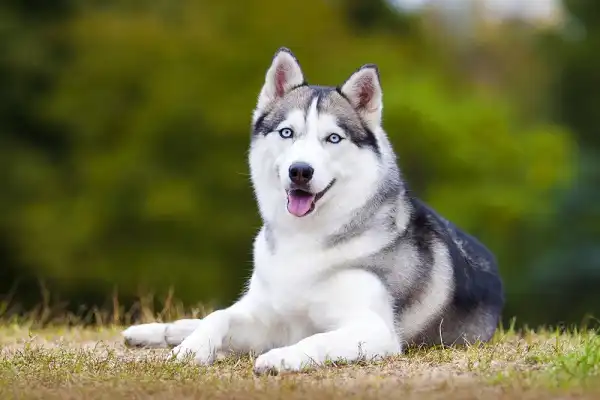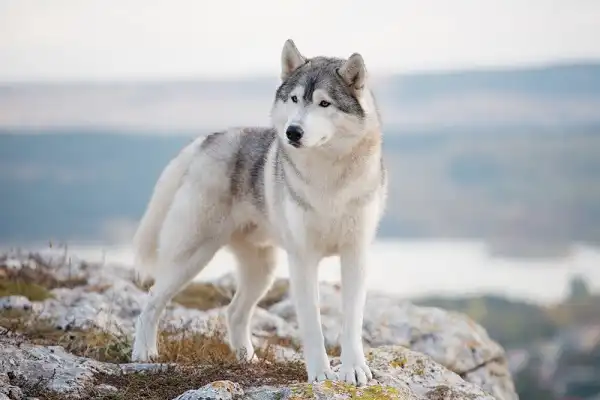For hundreds of years, the Siberian Husky has been a beloved companion and working animal among numerous cultures around the world. Although they may look intimidating to some due to their thick fur and muscular figure, this active Northern breed is also friendly, loving, and fiercely loyal to its human companions. If you have ever considered bringing one of these striking animals into your home (or if you already own one), then keep reading for useful tips on how to care for this unique dog breed!

Siberian Husky Description
The Siberian Husky is a medium-sized dog breed that originated in Siberia, Russia. They were bred by the Chukchi people as sled dogs to transport goods and people over long distances in harsh Arctic conditions. The breed was recognized by the American Kennel Club in 1930 and has since become a popular companion and working dog. Siberian Huskies have a distinctive appearance with their thick, double coat that comes in a variety of colors, including black, white, gray, brown, and red. They have piercing blue or brown eyes that can also be bi-colored or particolored. In terms of temperament, the Siberian Husky is known for being friendly, affectionate, and playful. They are intelligent and independent, which can sometimes make them challenging to train. However, with proper training and socialization, they can make wonderful family pets.
Siberian Husky Habitat
The Siberian Husky is a hardy breed that thrives in colder climates. Originally bred to work in the harsh Arctic conditions of Siberia, they have a thick double coat that keeps them warm even in the coldest of temperatures. However, it is important to note that they can also adapt to living in other climates as long as they are properly acclimated and provided with adequate shelter. Siberian Huskies enjoy being outdoors and need plenty of exercises and mental stimulation to stay healthy and happy. They are not well-suited for apartment living or being cooped up indoors for long periods of time. Ideally, they should have access to a large yard or be taken on regular outdoor adventures such as hiking, camping, or running. When it comes to shelter, Siberian Huskies need a safe and comfortable place to call home. A sturdy doghouse with plenty of insulation and a door flap can provide protection from the elements during colder months. During the hotter months, it is important to ensure that they have access to shade and cool water to prevent overheating.
Siberian Husky Diet
A well-balanced diet is crucial to keep your Siberian Husky healthy and happy. This breed requires a high-quality diet that is rich in protein, with a moderate amount of fat and carbohydrates. It is recommended to feed them a diet that contains at least 18-22% protein and 5-8% fat. It is important to choose a high-quality dog food that is formulated to meet the specific nutritional needs of the Siberian Husky. Avoid feeding them table scraps or human food as this can lead to digestive issues and obesity. Siberian Huskies also require access to fresh water at all times, especially during hot weather or after exercise. Dehydration can lead to a variety of health issues, so make sure that your Husky has access to clean and fresh water throughout the day. In addition to a high-quality diet, it is important to avoid overfeeding your Siberian Husky. This breed has a tendency to overeat and gain weight quickly, which can lead to health issues such as joint problems, diabetes, and heart disease. It is best to feed them smaller meals throughout the day to help them maintain a healthy weight.

Siberian Husky Size
Siberian Huskies are medium-sized dogs that typically weigh between 35-60 pounds and stand 20-23 inches tall at the shoulder. They have a muscular build and a thick, fluffy double coat that comes in a variety of colors including black, white, gray, red, and sable. The breed is often mistaken for its larger cousin, the Alaskan Malamute, but Siberian Huskies have a sleeker build and are more agile and nimble. They were originally bred to pull sleds in the harsh conditions of Siberia, and their size and strength allowed them to navigate through deep snow and rugged terrain. Despite their size, Siberian Huskies are not known for being aggressive or intimidating. They are friendly and affectionate with their families and are known for their playful and outgoing personalities. They are also intelligent and independent dogs that can be stubborn at times, so consistent training and socialization are important to prevent any behavior issues.
Siberian Husky Lifespan
The Siberian Husky has an average lifespan of 12-14 years, which is typical for a medium-sized dog. However, with proper care and attention to their health and nutrition, some Siberian Huskies have been known to live beyond 14 years. Factors that can influence a Husky’s lifespan include genetics, nutrition, exercise, and access to quality healthcare. Regular veterinary check-ups are also crucial in ensuring a Husky’s health and longevity. This breed may be prone to certain health issues such as hip dysplasia, cataracts, and skin allergies, so it is important to catch and treat these conditions early on. Additionally, providing a stimulating and engaging environment for Siberian Husky can help to prolong their lifespan. This breed was originally bred to work and exercise in harsh conditions, and they require daily physical and mental stimulation to stay healthy and happy.
Siberian Husky Behavior
The Siberian Husky is a breed known for its friendly and affectionate personality. They are outgoing, and playful, and enjoy being around their humans. However, despite their friendly nature, they can be independent and stubborn at times, which requires consistent training and socialization to prevent any behavior issues. Siberian Huskies are known to be good with children and other pets, especially if they are raised with them from a young age. They enjoy being part of a pack and thrive in a social environment. They are also known to be vocal and expressive, often howling or “talking” to their humans. In terms of temperament, Siberian Huskies can vary from dog to dog, but they are generally friendly and sociable. However, some Huskies can be more reserved or aloof with strangers, which is why early socialization is important. They are also known to be escape artists, so a secure fence or consistent supervision is necessary to prevent them from wandering off.

Siberian Husky Speed
Siberian Huskies are a breed known for their speed and stamina. They were originally bred to work in harsh conditions, pulling sleds over long distances through snow and ice. Their strong, muscular build and thick, double coat make them perfectly suited to this task. When it comes to speed, Siberian Huskies are not the fastest breed out there, but they are certainly no slouches. On average, a Husky can reach speeds of up to 20 miles per hour, making them one of the fastest sled dogs. However, their true strength lies in their endurance, as they are capable of running for long distances without tiring. In addition to their physical abilities, Siberian Huskies are also known for their mental toughness and strong work ethic. They are highly trainable and eager to please their owners, making them ideal for sled racing and other working dog activities. One interesting fact about Siberian Huskies and their speed is that they are able to regulate their body temperature effectively, even when exerting themselves in extreme conditions.
Siberian Husky Hunting
Siberian Huskies were originally bred for endurance and strength, making them skilled hunters. Their hunting abilities can be traced back to their roots in the harsh and frozen terrain of Siberia, where they were used by the Chukchi people to hunt reindeer, foxes, and other small game. Their hunting instincts are still strong in modern-day Huskies, although their roles have shifted from hunting companions to beloved family pets. Nonetheless, their strong prey drive remains intact and they may still chase smaller animals if given the chance. Moreover, Huskies have sharp senses, particularly their keen sense of smell, which they use to track prey. Their endurance and tracking skills make them ideal for hunting in packs, as they are able to cover a wider area and take down larger prey. Despite their natural hunting abilities, Siberian Huskies are not commonly used for hunting purposes anymore. Instead, they are primarily kept as pets and valued for their companionship, intelligence, and loyalty. However, their hunting instincts and abilities can be honed through training and exercise, which can also help to satisfy their need for physical and mental stimulation.
Siberian Husky Grooming and Care
In order to maintain a healthy coat, Siberian Huskies regular grooming and care. Because of their double-coat and insulating, they should be groomed regularly to prevent matting and remove excess dirt or debris from the fur. Grooming will also help keep them cool in hot weather and warm in cold temperatures. In addition to regular brushing, Siberian Huskies require regular bathing and nail trimming. In between baths, it’s important to brush their fur several times a week to remove any dirt or debris. Their thick coat will also require extra attention around the ears and eyes. As part of grooming, be sure to check for parasites such as fleas and ticks, as these can cause irritation and discomfort. Finally, it’s important to keep an eye on the condition of your Siberian Husky’s teeth and gums. Brushing their teeth regularly will help reduce tartar build-up and maintain dental health.

Conclusion
Siberian Huskies are an impressive breed with a rich history and a variety of unique abilities. Their speed, agility, endurance, and sharp senses make them well-suited for hunting, although they are now primarily kept as pets. Furthermore, their thick coats serve to insulate them from cold temperatures and their physiology allows them to dissipate excess heat effectively. All in all, Siberian Huskies are a remarkable breed that is perfectly suited for the task at hand.
Frequently Asked Question


